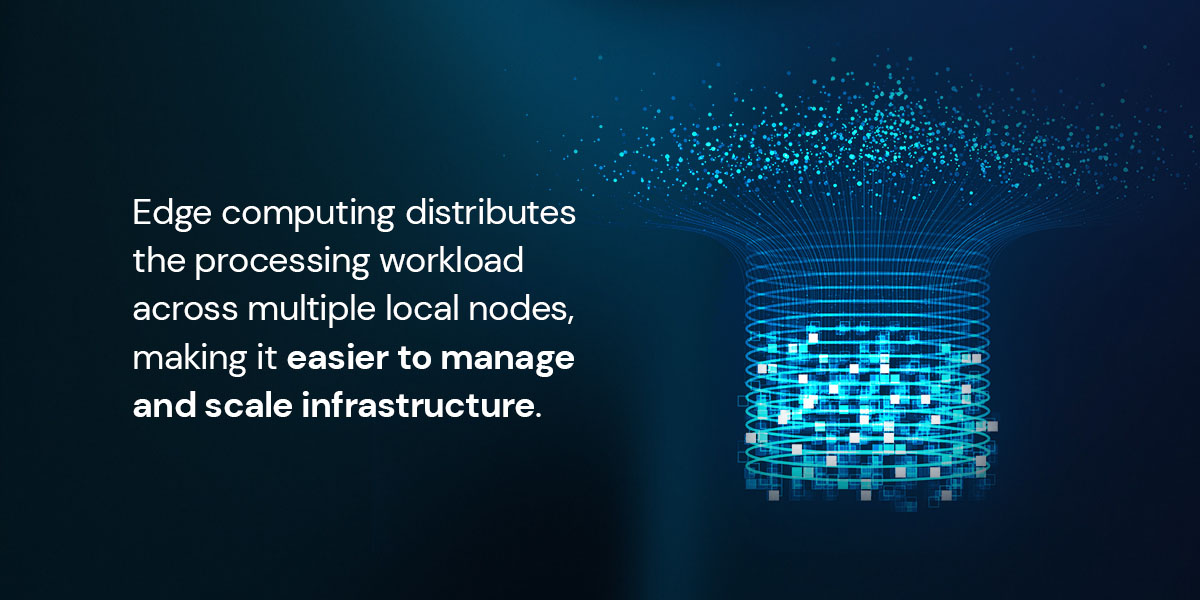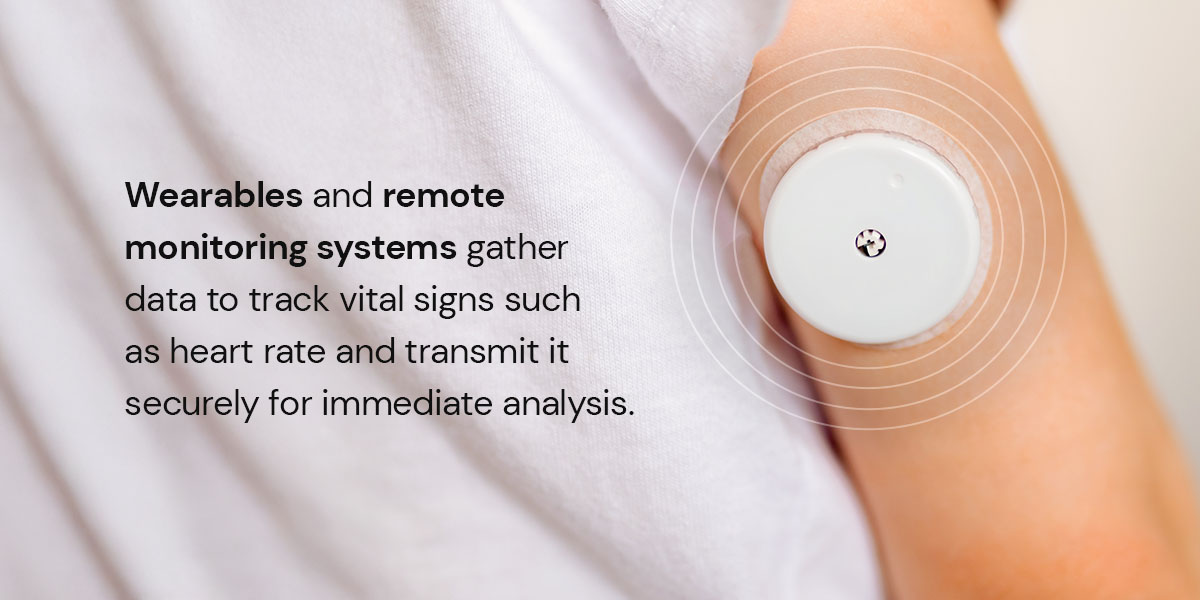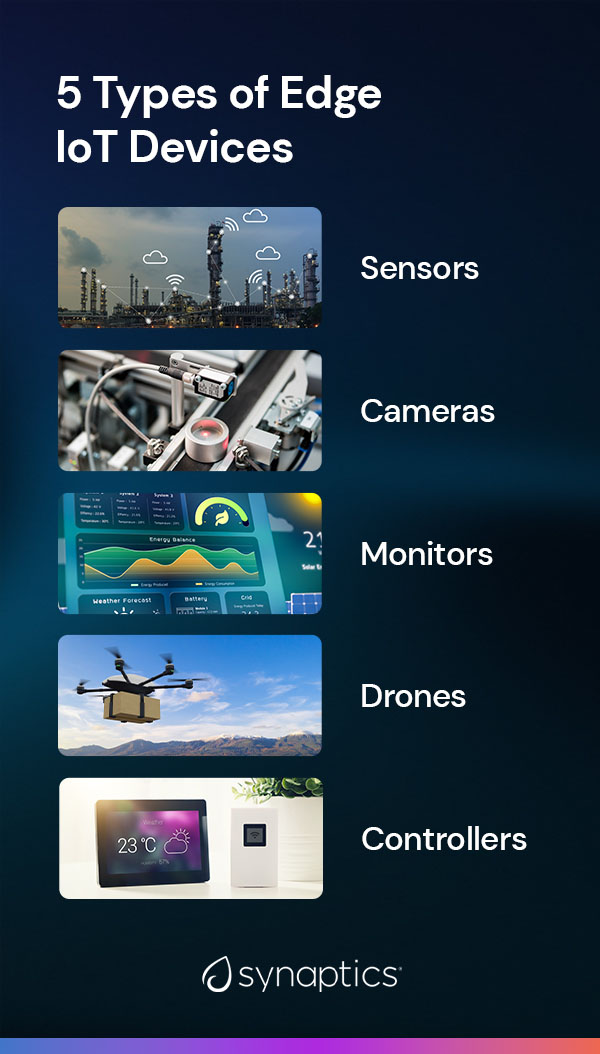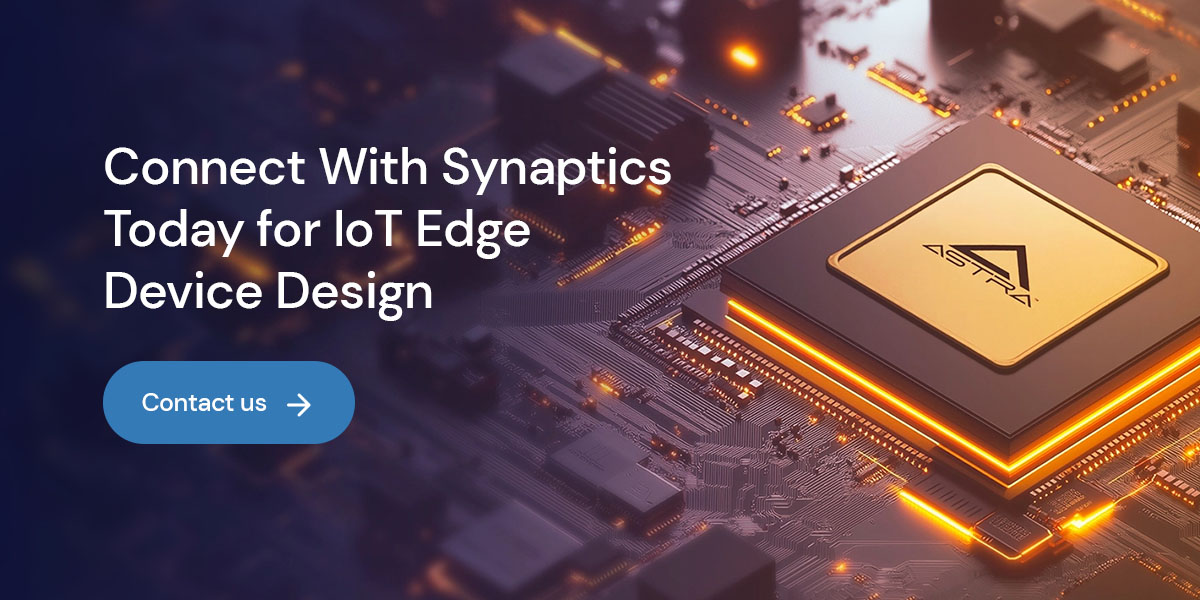From manufacturing to health care facilities, edge computing is a powerful technology reshaping how industries handle data and streamline operations. This is made possible through Internet of Things (IoT) devices, such as sensors, cameras and specialized processors embedded at the edge. The market value of IoT-enabled devices is projected to increase to $6.5 billion in 2030, which is a growth of over $4 billion compared to 2020.
This guide explores the key benefits of edge computing and IoT technology.
What Is Edge Computing in IoT?
Edge computing with IoT technology involves processing data closer to where it’s generated, which is at the network’s edge. Instead of sending every bit of information online to a distant cloud server, IoT edge devices analyze and process the data locally. This localized processing helps minimize delays, improves responsiveness and reduces the burden on bandwidth, which is crucial as IoT deployments continue to scale.
IoT devices such as sensors and smart appliances gather data in real time. With edge computing capabilities, IoT devices function as nearby edge gateways that filter, analyze and respond to data instantly.
For example, when an industrial sensor detects component damage or overheating, it prompts equipment to shut down without waiting for instructions from the cloud. Edge computing improves how IoT systems operate by enabling faster, smarter and secure device interactions while keeping critical processing close to where the computing happens.
Edge Computing and Cloud Computing in IoT
Edge-enabled IoT devices also sync with the cloud for long-term storage and coordination across systems. This hybrid approach ensures fast local action while keeping the broader IoT ecosystem connected and intelligent.
Cloud computing centralizes data processing in large-scale data centers, which is ideal for massive data storage, analytics and long-term decision-making. In contrast, edge computing processes time-sensitive data near the device itself, enabling more real-time responses. Edge computing in IoT devices complements the cloud by reducing lag, preserving bandwidth and enhancing local autonomy.
Traditional cloud-first models struggle with latency, network instability and data overload. By shifting some computing power to the edge, businesses can overcome these limitations and enhance efficiency, reliability and data security. For example, sensitive health data in hospitals can be processed locally with less risk of cyber threat than data that is routinely transmitted over networks.
How Is Artificial Intelligence Used With IoT in Edge Technology?
Artificial intelligence (AI) and machine learning (ML) have a critical role in how IoT devices process data at the edge. While traditional cloud computing relies on centralized servers for data processing, edge computing also performs AI and ML tasks directly on IoT-enabled local devices.
This decentralized approach enables real-time analysis and faster decision-making, even without internet connectivity. From security cameras to wearable health trackers, edge AI allows data to be processed where it’s generated for more immediate insights. As more industries demand timely insights, AI, ML and IoT are driving innovation in many functional and efficient ways. For example, smart traffic lights with IoT sensors or cameras analyze data and adjust traffic signals according to vehicular flow.
The Benefits of IoT Edge Computing
Edge computing offers a wealth of advantages for IoT technology, improving how businesses operate while enabling richer interactions with connected devices. The following are key benefits of employing edge-based IoT technology:
- Reduces latency: Edge computing significantly minimizes processing delays by computing data close to IoT devices. Local data handling eliminates latency that occurs when information has to travel to and from an online cloud server. This is especially important for applications like smart surveillance systems and automated industrial equipment. With edge computing and IoT, immediate decision-making becomes possible and practical, allowing systems to respond to environmental inputs and operational changes in a timely manner.
- Lowers energy costs: When data is processed and filtered locally, it reduces the need for constant, high-volume transmission to the cloud. It also decreases reliance on a centralized IT infrastructure and costly cloud service charges. The result is lower bandwidth consumption and less power usage across the network. Edge devices also optimize power through such techniques as sleep modes, adaptive processing and task prioritization, which are beneficial for battery-powered IoT sensors in remote areas.
- Enables real-time tracking and analytics: Edge computing and IoT enable immediate data monitoring, making it suitable for time-sensitive applications such as predictive maintenance, asset tracking and remote monitoring. Whether it’s identifying early signs of equipment failure or adjusting environmental controls for smart buildings, decisions can be made the moment data is collected. This improves a company’s operational efficiency, safety and responsiveness.
- Enhances data security: One of the core benefits of edge computing with IoT devices is its ability to boost data security. By processing regulated data locally, businesses reduce the risk of exposing data during cloud transmission. Edge devices also implement built-in encryption, authentication protocols and access control at the source. This layered security approach makes edge computing with IoT valuable in industries such as finance, healthcare and critical infrastructure, where data breaches can result in serious damage and regulatory penalties.
- Leverages IoT machine learning: By integrating IoT with ML and AI, edge computing allows intelligent algorithms to operate directly at the source of the data. From smart homes that learn user preferences to industrial sensors that detect equipment defects, edge-based AI and ML process raw data and provide actionable steps. This is essential for time-sensitive smart data analysis and predictive modeling without cloud dependency.

- Provides scalability solutions: As IoT networks expand, centralized processing can quickly become a bottleneck for cloud data transfers. Edge computing distributes the processing workload across multiple local nodes, making it easier to manage and scale infrastructure. This architecture allows organizations to add more devices and handle more data without compromising performance or overwhelming core systems, which is beneficial for growing edge computing capability with IoT ecosystems.
- Boosts network reliability: Since most data processing occurs locally, the network becomes more resilient with IoT edge computing technology. This means computer systems continue to function even if cloud connectivity is lost or delayed. Network reliability is essential for mission-critical operations in industries like manufacturing, transportation and agriculture, where downtime is costly and continuous operations are a priority.
Eight Use Cases for Edge Computing in IoT
Edge computing with IoT technology is revolutionizing the way we interact with the world around us. Here are eight examples of how it's being used in real-world applications:
1. Predictive Maintenance
Edge computing enables industrial IoT devices to continuously monitor equipment conditions at any time. By analyzing data like temperature, vibration and energy consumption at the source, businesses detect early signs of heavy equipment failure. This allows companies to schedule maintenance before breakdowns occur, reducing downtime and extending the machinery’s lifespan while streamlining operations.
2. Remote Monitoring for Jobsites
Edge computing enhances remote monitoring by enabling IoT devices to process and act on data locally. This is essential in hard-to-reach jobsites, such as oil rigs, rural cell towers and distant wind farms. Edge-enabled sensors flag discrepancies or safety risks immediately without waiting for cloud-based analysis, ensuring quicker response times and operational reliability.
3. Smart Grids
IoT in edge computing helps connect and modernize smart grids, which include power plants and substations. Smart grids enhance traditional electricity networks through the integration of digital technologies, sensors and software. This innovative approach enables precise and time-sensitive management of electricity supply and demand, resulting in reduced costs and improved grid reliability.
Edge-enabled smart meters and sensors placed throughout the grid collect real-time data, such as energy consumption, load balancing and equipment status. The data is processed locally, enabling improved decision-making for efficient energy distribution, fault detection and reduced utility costs.
4. Connected and Autonomous Vehicles
A standout application of edge computing in IoT is autonomous vehicles. Self-driving cars rely on local data processing to respond instantly to road conditions, traffic and obstacles. By analyzing input from onboard sensors such as cameras and light detection and ranging scanners, these vehicles make split-second decisions without depending on external networks. This enables efficient route optimization, improved fuel usage and enhanced safety, making edge computing instrumental in the development of smart transportation.
5. Health Care
Edge computing is transforming health care experiences through smart IoT devices. Wearables and remote monitoring systems gather data to track vital signs such as heart rate and transmit it securely for immediate analysis. Critical alerts can be generated locally on the device, allowing medical professionals to intervene right away. This setup supports telehealth services, chronic disease management and personalized care, even in clinics with limited bandwidth and connectivity.

6. Supply Chain Management
Edge computing in IoT delivers end-to-end visibility across supply chains. Radio frequency identification (RFID) tags, global positioning system (GPS) trackers and environmental sensors placed on goods and transport vehicles provide location and condition data. For example, it helps supply chains reroute shipments during delays or prompt alerts for temperature breaches, enabling more agile logistics and improved quality control.
7. Farming and Environmental Monitoring
IoT sensors deployed in agriculture and environmental science collect data on soil conditions, air and water quality and weather patterns. Real-time monitoring is possible without the need for constant connectivity. This leads to more efficient farming practices and proactive environmental management. Edge computing with IoT devices enables sensors to analyze areas locally and act instantly, such as activating irrigation systems or prompting air quality warnings.
8. Augmented Reality and Virtual Reality
IoT in edge computing significantly enhances augmented reality (AR) and virtual reality (VR) experiences by reducing latency and bandwidth strain. Improved responsiveness allows AR and VR tools to adapt instantly to the user’s physical environment and even function offline, providing more powerful applications that were once limited by cloud-based delays. Applications such as virtual product demos, AR-based maintenance instructions or immersive training simulations benefit from timely responsiveness when data is processed close to the user.
Five Types of Edge IoT Devices
Edge computing enhances a wide range of IoT devices for different purposes. Let's take a closer look at some of these IoT devices:

1. Sensors
Depending on the operation, IoT sensors capture on-the-spot data such as temperature, pressure, humidity and motion. These devices gather localized data and process it at nearby edge nodes, enabling rapid decision-making without relying on a central cloud. For example, in manufacturing, vibration and thermal sensors detect early signs of equipment failure, prompting repair notifications to prevent breakdowns.
IoT-ready wireless connectivity solutions are also improving the performance and responsiveness of edge IoT devices with sensors. In smart homes, motion sensors adjust lighting dynamically, enhancing comfort and energy efficiency. This boosts applications that require timely data processing and control, including security systems and home automation.
2. Cameras
Smart cameras are evolving beyond capturing images. With edge computing in IoT, cameras process and analyze footage directly where it’s captured. This reduces latency, offloads network traffic and enables immediate action. For example, in a smart city, edge-enabled cameras detect unusual activity and trigger alerts without sending large video data to a central cloud.
In retail, cameras analyze shopping movements to optimize store layouts. At industrial sites, cameras use edge intelligence to monitor production lines and flag possible issues the moment they occur. Integrated with AI, smart cameras support facial recognition, license plate reading and crowd analytics, all with minimized data transfer.
3. Monitors
Edge-enabled IoT monitors are used to track key markers such as energy usage, air quality, fluid levels and machine performance. Whether it's optimizing heating and cooling systems or flagging irregularities in water treatment plants, IoT monitors provide a critical layer of operational visibility.
In industrial settings, these devices combine sensor data with edge processing to deliver responsive insights that drive efficiency. For example, they enable predictive maintenance by identifying subtle signs of wear and tear. IoT monitors are also used in smart energy systems to identify consumption peaks and automatically adjust settings to minimize costs.
4. Drones
Drones integrated with edge IoT capabilities are transforming industries that require inspections, surveillance and deliveries in hard-to-reach areas. These airborne edge devices use cameras, sensors and onboard processors to collect and analyze data during flight without relying on cloud uploads.
In energy and utility sectors, drones inspect remote equipment like wind turbines or oil pipelines, relaying condition updates to technicians. In warehouses, drones assist in inventory checks and maintenance inspections. They also enable ultra-fast deliveries, bypassing traffic and reaching remote locations in emergencies.
5. Controllers
At the core of IoT in edge computing are controllers, which are smart systems that manage, automate and secure networks of connected devices. These controllers integrate sensor inputs, camera feeds and actuator outputs to make intelligent, localized decisions.
For example, a smart controller reads room temperatures from multiple sensors and instantly adjusts airflows. In industrial factories, energy management controllers monitor equipment and optimize power usage. Their ability to automate workflows and coordinate diverse devices makes them essential devices in homes, offices and industrial environments. With built-in security features and local processing power, IoT edge controllers help ensure reliability and minimize operational downtimes.

Connect With Synaptics Today for IoT Edge Device Design
Edge computing in IoT addresses the limitations of cloud-based IoT, enabling devices to overcome bandwidth, latency and security challenges. Partner with Synaptics for the latest IoT edge device design solutions, such as Synaptics Astra™ AI-native IoT processors powered by open software and outstanding wireless connectivity for a secure, multi-modal device edge.
Synaptics is a trusted leader in AI and edge technology, delivering reliable, high-performance solutions that make connected devices smarter and more efficient. We help industries create secure, intuitive digital experiences that transform how users engage with intelligent connected devices. We also provide customized multimedia compute solutions with a unified AI framework that rapidly deploys to edge devices. From smart homes to workplaces, we specialize in engineering exceptional experiences that drive the next wave of digital transformation.
Take advantage of the latest IoT edge computing technology. Contact us today to discover how our IoT edge device design solutions enhance your business.

